Smart Window Tech Provides a View
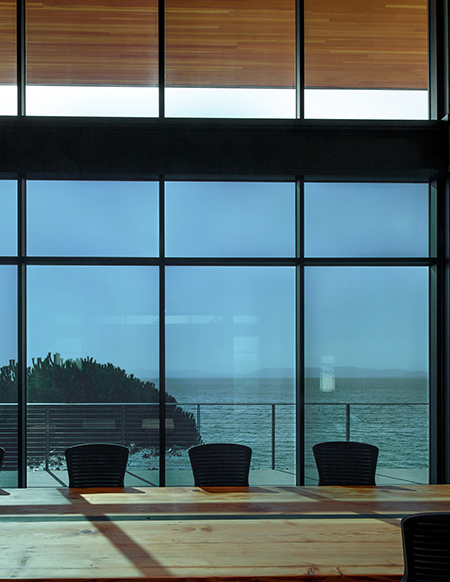
Developers, building owners, and architects and designers are pulling out all the stops in attracting tenants and creating value where there was little before. For those ahead of the curve, that means getting creative and expanding your understanding of what tenants, employers and end users find valuable in their workspace.
View, a smart window company based in Silicon Valley, is helping its clients do just that.
Over its 12 years, View’s now 1,000 employees have installed 75 million square feet of windows across 500 completed projects with 300 more projects underway.
“View was built on the understanding that natural light is required to live a healthy and productive life,” reads View’s mission statement. “We also recognized that ordinary windows are far from optimized, unable to effectively reduce glare and heat. View Smart Windows automatically adjust in response to the sun to increase access to natural light and views, to improve people’s health and wellness by significantly reducing headaches, eyestrain and drowsiness, while simultaneously saving energy.”
We spoke with, Brandon Tinianov, VP of Industry Strategy at View, about the tech behind smart glass, what that tech is capable of, and how View has turned building stakeholders’ attention to the skin of a building.
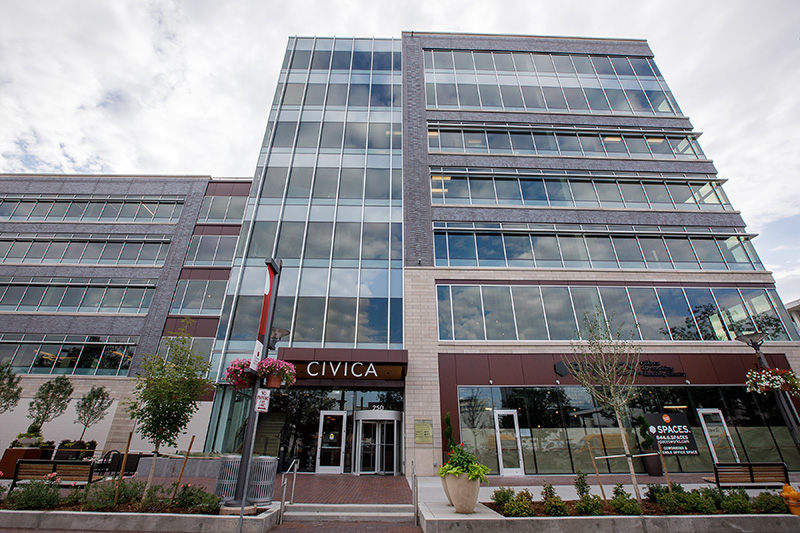
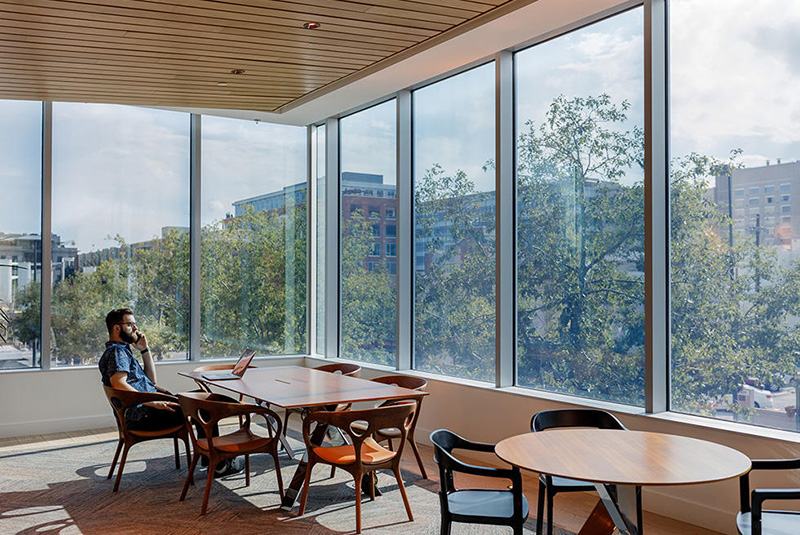 Tinianov says dynamic glass technology is about 60 years old. The product uses the same principles as transition lenses – which allow eyeglasses to darken in the sunlight and lighten in softer or darker conditions.
Tinianov says dynamic glass technology is about 60 years old. The product uses the same principles as transition lenses – which allow eyeglasses to darken in the sunlight and lighten in softer or darker conditions.
Transition lenses for buildings – but, it’s not exactly the same method of controlling light. While transition lenses use what is called “photochromic” technology, smart window glass is made using “electrochromic” technology. In electrochromic tech, a tiny, low-voltage electrical charge is applied to the glass, so that ions move between multiple ultra-thin metal oxide layers, causing the glass to tint.
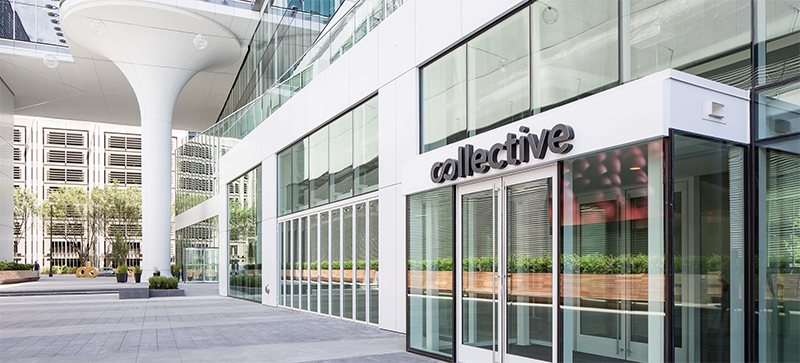
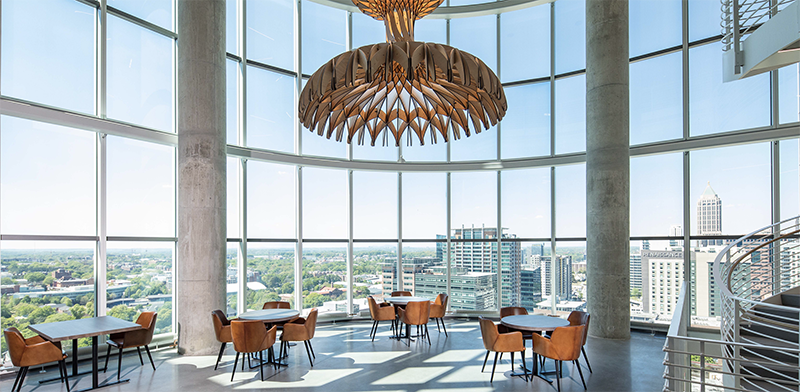
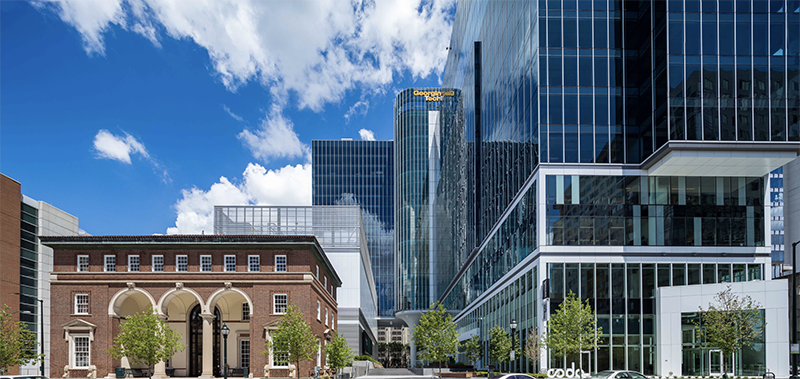 “Electrochromic glass is completely inorganic – it has a 50 year lifespan and is an incredibly stable material that won’t degrade over time, unlike photochromic glass,” said Mr. Tinianov.
“Electrochromic glass is completely inorganic – it has a 50 year lifespan and is an incredibly stable material that won’t degrade over time, unlike photochromic glass,” said Mr. Tinianov.
Because you can control electrochromic smart glass with a charge, you can adjust it as needed based on the conditions you set, instead of having to rely on the position of the sun.
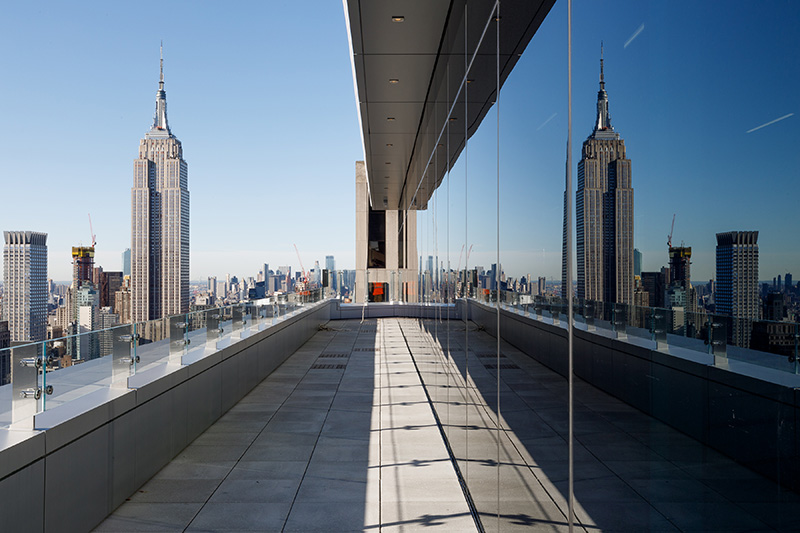
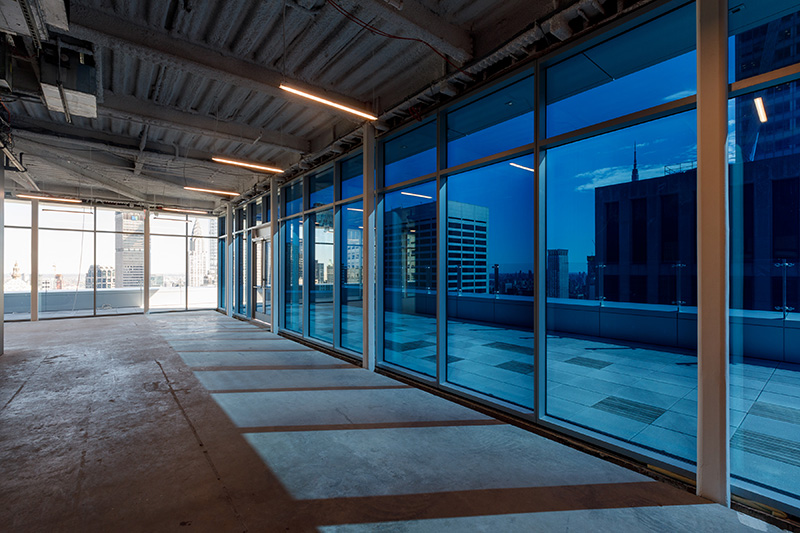
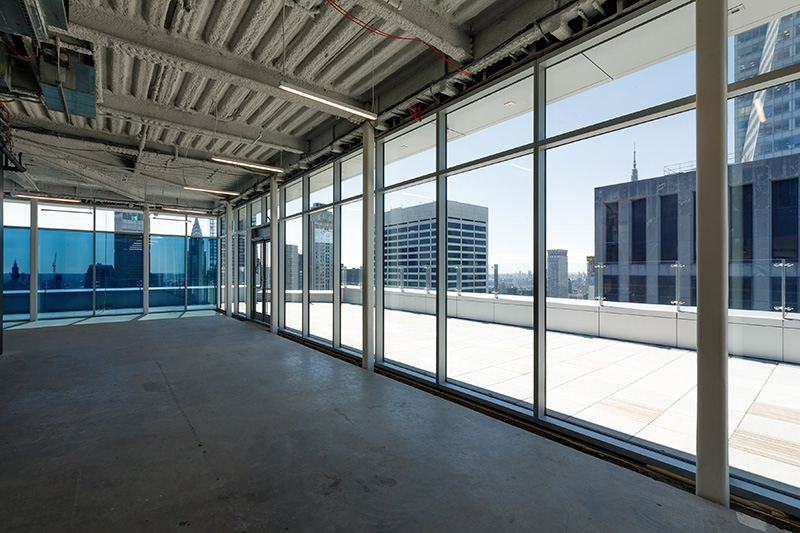
View Dynamic Glass, designed and manufactured in the U.S., is powered by what the company calls “Intelligence Outside” – an “intuitive intelligence engine” that measures, analyzes and adjusts itself according to:
>Cloud Cover. Predictive weather feeds and real-time sensors anticipate and respond to cloud cover. This allows optimum daylight levels even on overcast days.
>Occupant Location. Intelligence® knows where each occupant’s desk is located and the use of the space. Operation is fine-tuned based on actual occupant requirements to ensure comfort.
>Sun Angle. View accurately predicts sun angle for any given day and time. When sun angles change with seasons, View Intelligence® controls unwanted glare.
>Latitude & Longitude. Using precise geo-coordinates, View accurately predicts local sun positions, weather, and sun path.
>Nearby Obstructions. Intelligence® predicts reflected glare and shadows from neighboring structures and trees to ensure all day occupant comfort and delight.
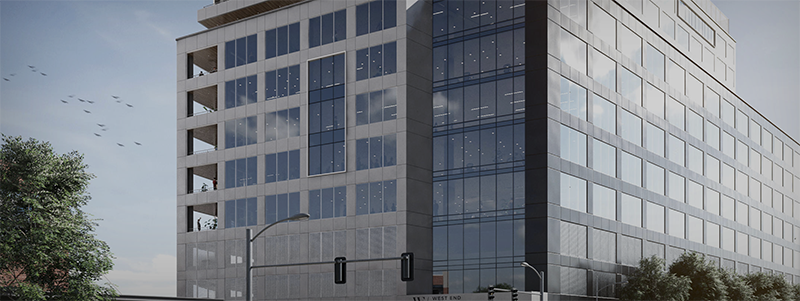
Using a Sky Sensor, the product “measures illuminance using multiple photo and infrared sensors, giving your building up to date and exact local information that feeds into Intelligence® operation.” It also provides custom, intelligent schedules to “meet your needs, allowing flexibility to block night time light pollution or allow in more daylight.”
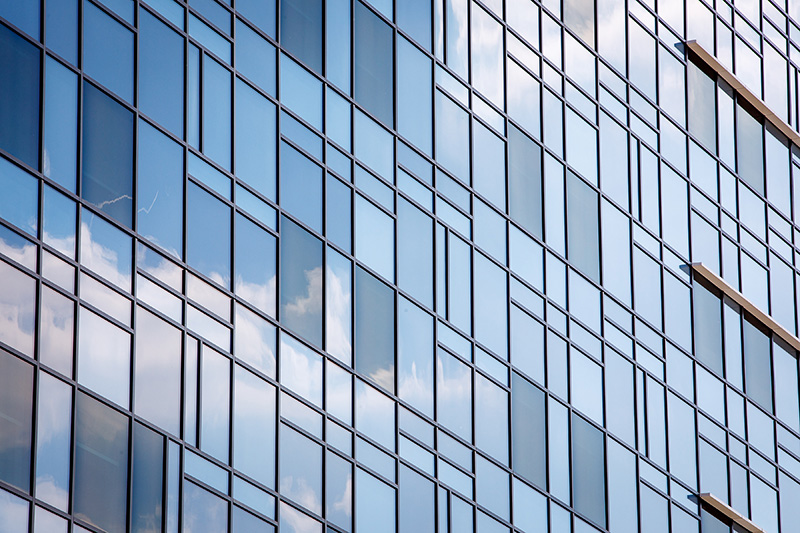
“Our View Dynamic Glass is connected to the internet, and can read the weather, which means it’s actually programmed to provide the correct level of tint,” said Tinianov. “That embedded intelligent programming operates automatically in the background, but if you want to override that system, you can always do so by adjusting it manually through an app – available on your phone, tablet or desktop.”
Using the View app, users can customize their windows from anywhere – set schedules for individual zones or entire facades, customize their experiences using a Scenes tool.
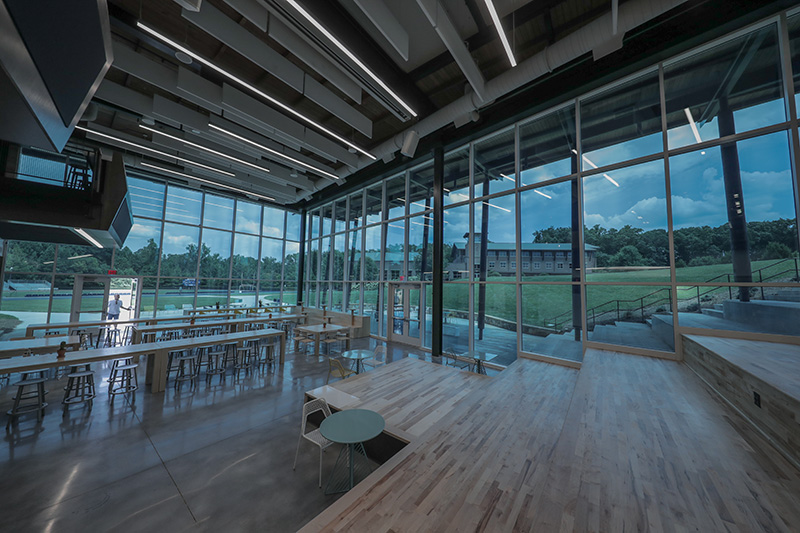
Every window is addressable and customizable, and controls can be completely hidden in window frames and ceiling space. The product employs “simple wiring architecture for quick installation.”
70% of View’s work is in commercial office projects, specified by developers as well as owner/occupiers. And in both instances, we’re being specified across the entire building.
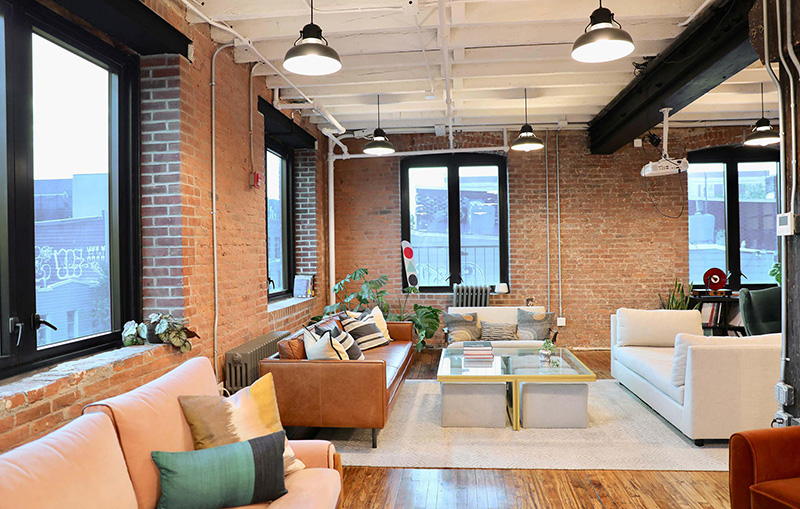
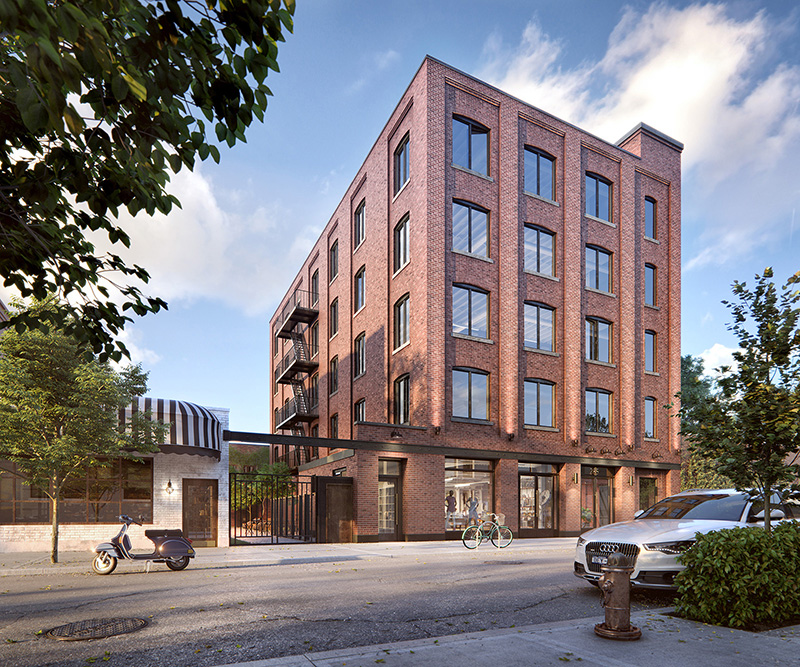 The company holds that installing View Dynamic Glass can reduce lighting and HVAC energy consumption by up to 20%. An example of the energy benefits at work in real-time is the terminal at San Francisco International airport, which was fitted entirely with View dynamic glass windows. The decision to install smart windows enabled SFO workers to adjust the HVAC systems to save costs during construction phases.
The company holds that installing View Dynamic Glass can reduce lighting and HVAC energy consumption by up to 20%. An example of the energy benefits at work in real-time is the terminal at San Francisco International airport, which was fitted entirely with View dynamic glass windows. The decision to install smart windows enabled SFO workers to adjust the HVAC systems to save costs during construction phases.
“The energy benefits are really valuable, but we’re seeing a lot of our clients focusing more and more on the occupant benefits – things like improved cognitive function, improved concentration, and improved ability to rest your eyes and recharge mentally,” said Tinianov. “Anywhere from 80-90% of a company costs come from its employees, so if we can improve that employee experience in a significant way, that adds value.”
“Many architects have never worked with smart glass, so they naturally use it like regular glass. When we start working with them on a project, we need to get them to take a step back and spend time understanding how they can use the tech to really make the most of the investment.”
View sees tinting glass as just the beginning of what’s possible.
“It’s our goal to evolve dynamic glass into true smart glass,” Tinianov said. “Our glass is directly connected to the internet, and once you activate the skin of the building like that, you then have a network sitting in place ready to do all sorts of things. For example, you could activate hotspots, have video meetings on the glass, or make improvements to security measures.”
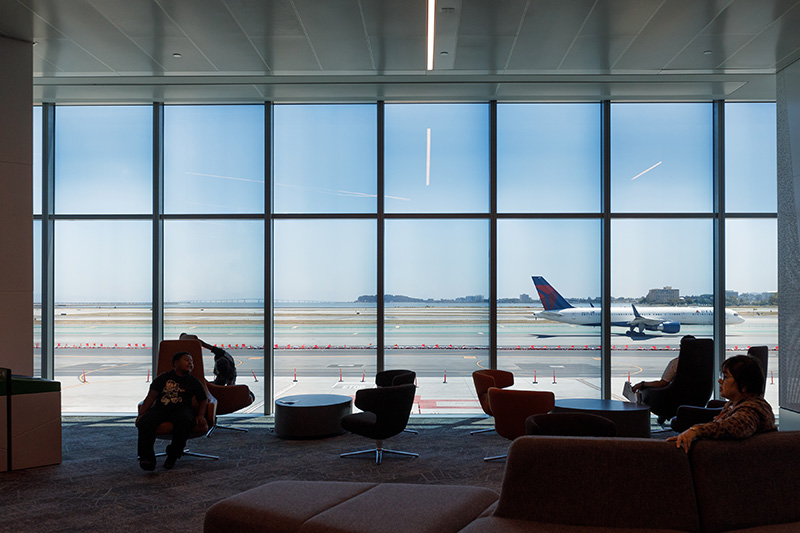
As an example, in the 2017 Las Vegas shooting, it took police forces 18 minutes to find the exact window from which the shooter was operating; View windows, with glass connected to the Internet, would eliminate that lost time.
View’s smart glass, and any other smart glass on the market, is considered a premium product, with a bigger price tag than regular glass. However more buildings are choosing to spend the money here when considering they can eliminate other expenses – such as shades/blinds and any other treatments to the façade – and take advantage of energy savings and occupant benefits.
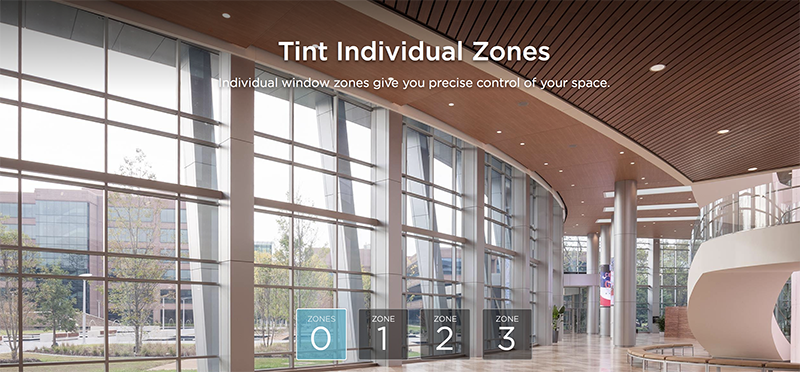
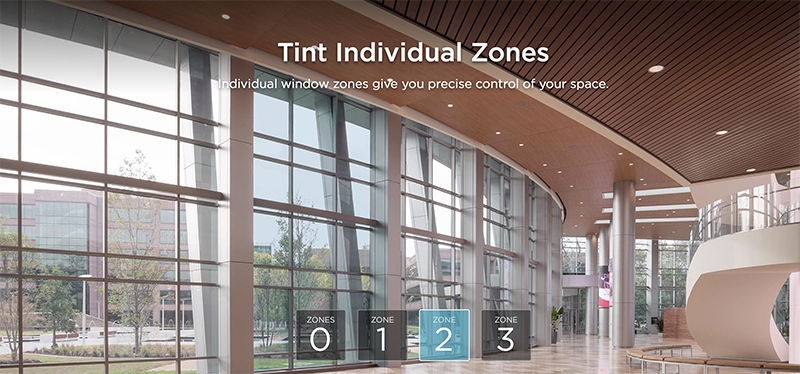

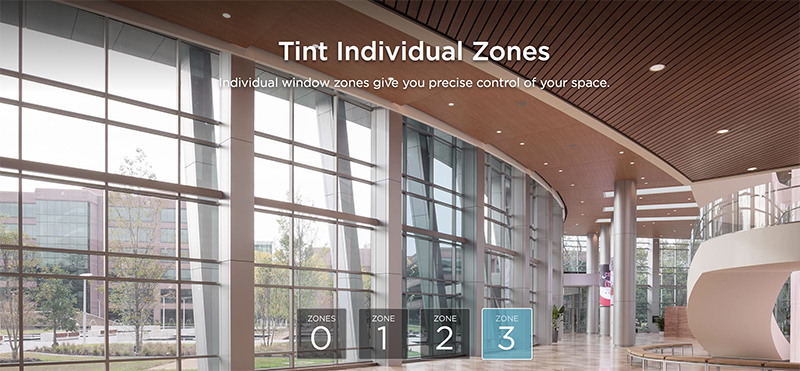
“Our clients tend to be all about talent retention and occupant wellbeing. They have that focus. Specifying builders have put in fitness facilities, showcase lobbies, cafés, and other amenities – but everyone is doing these things, and our clients are trying to differentiate themselves. Tenants are now shopping specifically for better workspaces – spaces with high ceilings, floor-to-ceiling windows, and plenty of natural daylighting.”
View is working hard to continue turning people’s attention to the skin of a building, and the possibilities that space presents. Architects and designers can help create more value for their clients simply by being aware of those possibilities and the products available to them, and presenting them to clients accordingly.



